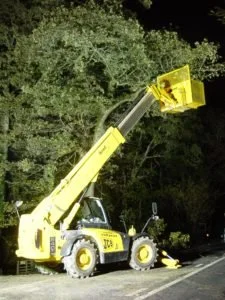Woodland & Trees
Geoff Billington has a wealth of experience carrying out tree surveys and his inspections are always very thorough and detailed. Tree surveys are required if trees containing certain kinds of features likely to contain bats, are to be removed or need to be managed for safety of the public or for the safety of the tree.
Two methods of access are used for tree climbing and rope access, a ground-based double rope rescue system to BS7985, and traditional tree climbing techniques. GreenaEco are National Grid, EDF, and Electricity Alliance approved tree climbers. Tree surveys are also carried out for individual or small numbers of trees, with GreenaEco carrying out survey work for the highways agencies in the south-west counties.
PLEASE NOTE: Trees containing bat roosts are protected by law in exactly the same way that buildings with bat roosts are protected – i.e. it is illegal to disturb roosting bats or destroy roosts, even if the bat is not present at the time of disturbance.
A tree survey is required in order to ascertain the status of the trees as a bat roost before any work can be legally carried out. Trees or limbs of trees with rot holes, flaking bark, cavities or woodpecker holes must not be removed without first being adequately checked for bat use, which will then inform the requirement for a bat mitigation licence from Natural England. Old, dead or dying trees are the most likely ones to contain bats – and these are also the trees most likely to require remedial treatment or removal.
Surveys must be carried out on trees and a bat licence must be obtained prior to felling if bats are present in order to avoid committing an offence under European and UK wildlife legislation.
Greena Ecological Consultancy have devised and carried out detailed bat surveys and evaluations for extensive woodlands in England and Wales, including Horner Wood, Hawkridge, Hawkecombe, Culbone Woods and Woodcombe and North Hill Woods in Exmoor, Yarner Wood, Dendles Wood, Lustleigh Wood, Hound Tor Wood, Pullabrook Wood, Dunsford Wood, Whiddon Wood, Hannicombe Wood, Bovy Woods, Holm Chase Woods Holm Woods, Dartmoor, Pengelli Woods in Pembrokeshire, Helbeck Woods in Cumbria.
Various techniques to survey these woodlands were used, including radio tracking, transect surveys, emergence surveys and inspection by tree climbing, ladders or cherry pickers, and using fibre scopes and remote video imaging when appropriate. Greena Ecological Consultancy have provided some innovative ideas where the loss of trees may impact on flight lines or destroy roosts which have proved to be both cost effective and successful.
If you require tree or woodland surveys then please get in touch through our Quotes page.

